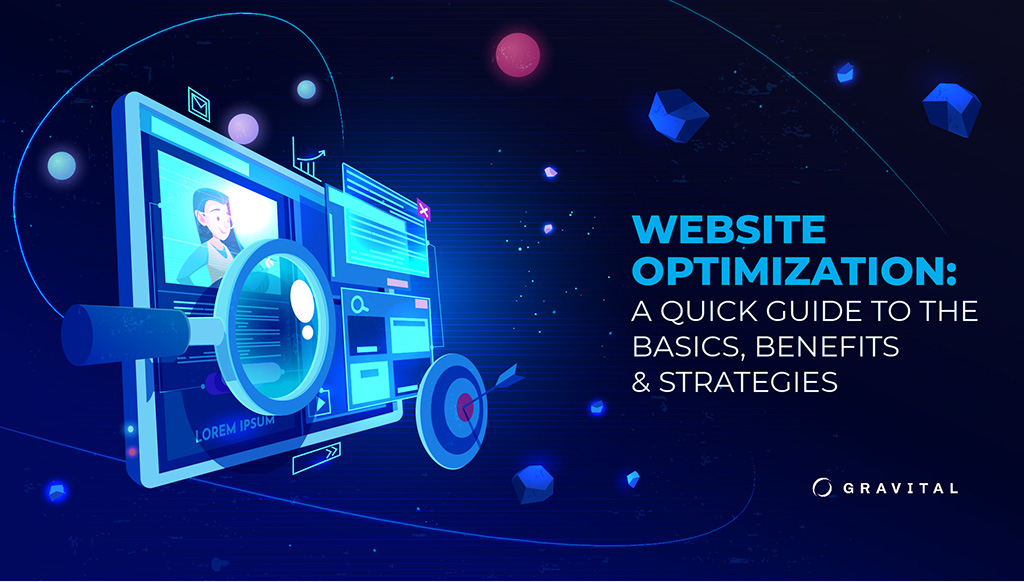As the digital landscape continues to evolve, website optimization remains critical for success. In 2025, businesses must embrace cutting-edge strategies to ensure their websites attract traffic, engage users, and achieve high rankings in search engine results. From speed improvements to personalized experiences, this guide covers the essential techniques to optimize your website for success in 2025.
1. Implement Advanced Analytics for Website Optimization
Data-driven decisions ensure continuous improvement in website performance.
- Use AI-Driven Tools: Predict trends and adjust strategies accordingly.
- Monitor User Behavior: Understand how visitors interact with your site and make improvements.
- Track Key Metrics: Keep an eye on bounce rates, conversions, and dwell time to measure success.

2. Improve Internal Linking for Website Optimization
Internal links guide users through your site and improve SEO.
Avoid Broken Links: Regularly audit and fix issues to maintain a smooth user experience.
Link to Relevant Content: Connect related pages to keep visitors engaged.
Use Descriptive Anchor Text: Help search engines and users understand the link’s purpose.
3. Prioritize Core Website Optimization
Google’s Core Web Vitals—focusing on page speed, interactivity, and visual stability—are key ranking factors. To succeed:
- Enhance Loading Speed: Optimize images, enable lazy loading, and reduce unnecessary scripts.
- Improve Interactivity: Reduce input delays by streamlining JavaScript and server response times.
- Ensure Visual Stability: Minimize layout shifts by defining dimensions for images and ads.
4. Enhance Visual Content for Website Optimization
Visual content is a must for user engagement and SEO success in 2025.
- Use High-Quality Images and Videos: Engage visitors and reduce bounce rates.
- Optimize File Sizes: Maintain quality while ensuring fast loading times.
- Add Alt Text: Make images accessible and improve search engine visibility.
5. Optimize for Mobile Devices
With mobile-first indexing, your website’s mobile experience is a priority. Strategies include:
- Responsive Design: Ensure your website adapts seamlessly to different screen sizes.
- Mobile Page Speed: Compress files and use caching to ensure fast loading times.
- User-Friendly Navigation: Simplify menus and avoid pop-ups that hinder usability.
6. AI-Powered Personalization
Users expect tailored experiences, and AI can help deliver them. Use AI to:
- Analyze User Behavior: Recommend products or content based on preferences.
- Create Dynamic Content: Personalize landing pages based on visitor demographics or search intent.
- Chatbots and Virtual Assistants: Provide instant support to improve user experience.
7. Voice Search Optimization
Voice search continues to rise in popularity, making optimization essential.
- Focus on Conversational Keywords: Use natural, question-based phrases in your content.
- Create FAQ Pages: Address common queries that align with voice searches.
- Leverage Local SEO: Optimize for “near me” searches with location-specific keywords.
8. Leverage Structured Data and Schema Markup
Structured data helps search engines understand your site and display rich snippets.
- Add Markup for Events, Products, and Reviews: Boost click-through rates (CTR) with enhanced search results.
- Use Schema for FAQs: Increase visibility in voice and traditional search.
- Optimize for Featured Snippets: Provide concise, valuable answers to capture this prime SERP real estate.
9. Strengthen Content Quality
Content remains king in 2025, but it must be relevant and engaging.
- Write for Users, Not Just Search Engines: Provide value and address user intent.
- Focus on Long-Form Content: In-depth articles often rank higher and attract more shares.
- Keep Content Updated: Refresh older articles to keep them relevant and boost rankings.
10. Build Strong Backlinks for Website Optimization
Backlinks are crucial for building domain authority and trust.
- Earn Links from Reputable Sites: Create shareable, authoritative content.
- Use Outreach Campaigns: Connect with industry influencers and bloggers for backlinks.
- Conduct Backlink Audits: Remove low-quality or spammy links to maintain credibility.
Data-driven decisions ensure continuous improvement in website performance.
11. Focus on Security and Privacy
With cybersecurity concerns on the rise, a secure website is non-negotiable.
- Use HTTPS Encryption: Protect user data and build trust.
- Implement Multi-Factor Authentication (MFA): Secure user accounts.
- Be Transparent with Data: Clearly outline how user information is collected and used.
12. Optimize for Local Search
For businesses with a local audience, local SEO is vital.
- Update Google My Business Listings: Ensure accurate contact information and operating hours.
- Encourage Reviews: Positive feedback boosts visibility and trust.
- Use Location-Specific Keywords: Highlight services tailored to your area.
13. Invest in Video SEO
Videos capture attention and improve engagement metrics.
- Add Transcripts and Subtitles: Make content accessible and improve ranking opportunities.
- Optimize Thumbnails and Titles: Create visually appealing, keyword-rich video elements.
- Embed Videos in Content: Enhance the value of your blog posts or landing pages.
14. Monitor and Adapt
SEO and website optimization trends evolve constantly.
- Conduct Regular Audits: Identify weaknesses and opportunities.
- Stay Updated on Algorithm Changes: Adapt strategies to align with search engine updates.
- Experiment with New Tools: Test emerging technologies to enhance performance.
Conclusion
In 2025, successful website optimization requires a comprehensive approach that addresses user experience, SEO, and security. By adopting these techniques—like enhancing Core Web Vitals, personalizing content, and leveraging advanced analytics—you’ll be well-positioned to stay ahead in the digital landscape. Embrace these strategies to attract more visitors, engage them effectively, and achieve your business goals.oar.







Leave a Reply